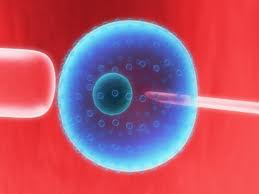In Part I of Sperm Stories, we talked about how temperature—both cold and hot—affects sperm production, swimming speed, and quality.  In this article, we’ll take a look at several recent studies explore non-temperature-related factors.
In this article, we’ll take a look at several recent studies explore non-temperature-related factors.
- Turn off the tube. Men who watch 20 hours or more of TV have half the sperm count of men who watch little or no TV, according to Jorge Chavarro, an assistant professor of nutrition and epidemiology at the Harvard School of Public Health. On the other hand, 15 hours of moderate to vigorous exercise per week can increase sperm production by up to 75%, when compared to guys who work out fewer than five hours/week. What’s the low-sperm-TV connection about? No one knows for sure. But maybe the constant bombardment by bad news, war, and images of Kim Kardashian subconsciously make men not want to bring a child into the world. Hey, that’s my theory. We’d love to hear yours. Chavarro’s study was published in the British Journal of Sports Medicine.
- More sleep = more (and healthier) sperm. Researcher at the University of Southern Denmark found that men who have sleep disturbances, such as insomnia, trouble falling asleep, getting up multiple times at night, and staying up late had a 29-percent lower sperm count than men who had no sleep problems at all. Their sperm was also more likely to look deformed. Oh, and their testicles were smaller. The study was published in the American Journal of Epidemiology.
- Nuts for your nuts. Eating half a cup of walnuts a day improves sperm quality. For 12 weeks, a team of researchers, led by UCLA’s Wendie Robbins, studied 117 healthy men ages 21-35 who ate a typical Western-style diet. 59 added the daily dose of nuts, the rest (58) continued on without the nuts. After the 12 weeks, there were no differences between the two groups in terms of body weight, BMI, or activity level. But the nuts group had significantly higher levels of omega-6 and omega-3 fatty acids (which are good things) as well as increased sperm vitality (percentage of sperm that are alive), morphology (percentage that are normal), and motility (percentage that are moving and how well they move). The study is published in the journal Biology of Reproduction.



